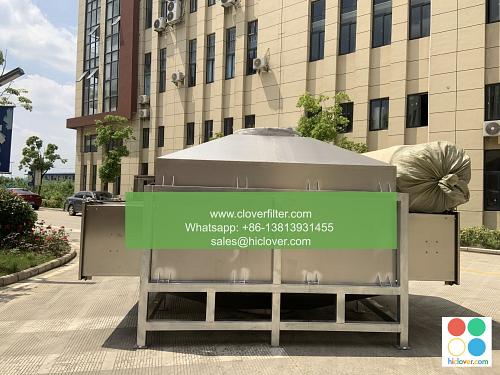Air Filter Technology: A Review of Design for Cleanrooms and Controlled Environments

Air filter technology has become an essential component in maintaining cleanrooms and controlled environments, particularly in industries such as pharmaceuticals, biotechnology, and electronics manufacturing. The design of air filters plays a critical role in ensuring the quality and purity of the air in these environments, and advancements in technology have led to the development of more efficient and effective filters.
Introduction to Air Filter Technology
Air filter technology involves the use of filters to remove contaminants and particles from the air, thereby maintaining a clean and controlled environment. The design of air filters typically involves the use of High Efficiency Particulate Air (HEPA) filters, Ultra Low Particulate Air (ULPA) filters, and Activated Carbon filters, which work together to capture particles as small as 0.3 microns. These filters are designed to provide high airflow rates, low pressure drops, and long service lives, making them ideal for use in cleanrooms and controlled environments.
Design Considerations for Cleanrooms and Controlled Environments
When designing air filters for cleanrooms and controlled environments, several factors must be considered, including airflow rates, pressure drops, filter efficiency, and maintenance costs. The design of the filter must also take into account the type of contaminants present in the air, as well as the required level of cleanliness. For example, in pharmaceutical cleanrooms, the air filters must be designed to capture microbial contaminants and particulate matter, while in electronics manufacturing cleanrooms, the filters must be designed to capture static-sensitive particles and ionizing radiation.
Application Areas for Air Filter Technology
Air filter technology has a wide range of applications in various industries, including:
* Pharmaceuticals: Air filters are used to maintain cleanrooms and controlled environments in pharmaceutical manufacturing facilities, ensuring the quality and purity of pharmaceutical products.
* Biotechnology: Air filters are used to maintain cleanrooms and controlled environments in biotechnology research and development facilities, ensuring the quality and purity of biological products.
* Electronics Manufacturing: Air filters are used to maintain cleanrooms and controlled environments in electronics manufacturing facilities, ensuring the quality and reliability of electronic components.
* Hospitals and Healthcare: Air filters are used to maintain cleanrooms and controlled environments in hospitals and healthcare facilities, ensuring the quality and purity of the air and preventing the spread of infections and diseases.
Advancements in Air Filter Technology
Recent advancements in air filter technology have led to the development of more efficient and effective filters, including Nanofiber Filters, Membrane Filters, and Ionic Air Filters. These filters offer improved filter efficiency, increased airflow rates, and reduced maintenance costs, making them ideal for use in cleanrooms and controlled environments.
Conclusion
In conclusion, air filter technology plays a critical role in maintaining cleanrooms and controlled environments, particularly in industries such as pharmaceuticals, biotechnology, and electronics manufacturing. The design of air filters must take into account various factors, including airflow rates, pressure drops, filter efficiency, and maintenance costs. With advancements in technology, air filters have become more efficient and effective, offering improved filter efficiency, increased airflow rates, and reduced maintenance costs. As the demand for cleanrooms and controlled environments continues to grow, the importance of air filter technology will only continue to increase, highlighting the need for continued research and development in this field. You haven’t asked a question or provided any context. Please provide more information so I can assist you. What would you like to know or discuss?

